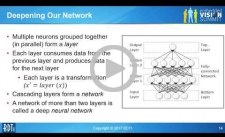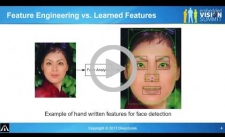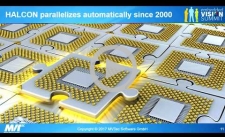| LETTER FROM THE EDITOR |
|
Dear Colleague,
Deep
neural networks (DNNs) are proving very effective for a variety of
challenging machine perception tasks, but these algorithms are very
computationally demanding. To enable DNNs to be used in practical
applications, it’s critical to find efficient ways to implement them.
The Embedded Vision Alliance will delve into these topics in a free
webinar, “Efficient
Processing for Deep Learning: Challenges and Opportunities,” on September 28 at 10 am Pacific Time. This webinar explores
how DNNs are being mapped onto today’s processor
architectures, and how both DNN algorithms and specialized processors
are evolving to enable improved efficiency. It is presented by Dr.
Vivienne Sze, Associate Professor of Electrical Engineering and
Computer Science at MIT (www.rle.mit.edu/eems). Sze will also offer
suggestions on how to evaluate competing processor
solutions in order to address your application and design
requirements. To register, see the event
page.
Brian Dipert
Editor-In-Chief, Embedded Vision Alliance
|
FUNDAMENTALS OF
DEEP LEARNING FOR VISION |
|
Demystifying Deep Neural Networks
What are deep neural networks, and how do
they work? In this talk, Shehrzad Qureshi, Senior Engineer at BDTI,
provides an introduction to deep convolutional neural networks (CNNs),
which have recently demonstrated impressive success on a wide range of
vision tasks. Without using a lot of complex math, he introduces the
basics of CNNs. He explores the differences between shallow and deep
networks, and explains why deep learning has only recently become
prevalent. He examines the different types of layers used in
contemporary CNN designs and illustrates why networks composed of these
layers are well suited to vision tasks.
Training Deep Neural Networks
In this talk, Sammy Sidhu, Senior Engineer
at DeepScale, introduces the basics of training deep neural network
models for vision tasks. He begins by explaining fundamental training
concepts and terms, including loss functions and gradients. He then
provides an accessible explanation of how the training process works.
Next, he highlights common challenges in training deep neural networks,
such as overfitting, and explores proven techniques for addressing
these challenges, including regularization and data augmentation.
Throughout, he illustrates training techniques and challenges using
examples taken from real-world applications.
|
MACHINE VISION FOR
INDUSTRIAL AUTOMATION |
|
Visual Intelligence Opportunities in Industry 4.0
In order for industrial automation systems
to meaningfully interact with the objects they’re identifying,
inspecting and assembling, they must be able to see and understand
their surroundings. Cost-effective and capable vision processors, fed
by depth-discerning image sensors and running robust software
algorithms, continue to transform longstanding industrial automation
aspirations into reality. And, with the emergence of the Industry 4.0
“smart factory,” this visual intelligence will further evolve and
mature, as well as expand into new applications, as a result becoming
an increasingly critical aspect of various manufacturing processes.
This article from Alliance member companies Basler, MVTec and Xilinx
provides nformation on the visual intelligence-enabled capabilities that are
key to a robust and evolvable Industry 4.0 smart factory
infrastructure, and how to support these capabilities at the chip,
software, camera and overall system levels.
Introduction to the HALCON Embedded Machine Vision Library
In this presentation, Olaf Munkelt,
Co-founder and Managing Director at MVTec Software GmbH, demonstrates
how easy it is to develop an embedded vision identification application
based on the HALCON Embedded standard software library and get it
running on a Raspberry Pi. The demonstration showcases the benefits of
HALCON Embedded for industrial applications. Munkelt presents how
HALCON Embedded allows users to quickly develop a machine vision
application on a standard PC and thereby eases programming of an
embedded system and shortens development time. Viewers will learn about
HALCON Embedded’s speed and robustness, and also how MVTec’s support
team provides advice and services for users.
|
UPCOMING INDUSTRY
EVENTS |
|
Xilinx
Developer Forum: September 13, 2017, Santa Clara, California
AutoSens
Conference Brussels: September 19-21, 2017, Autoworld,
Brussels, Belgium
Synopsys
ARC Processor Summit: September 26, 2017, Santa Clara,
California
Embedded Vision Alliance Webinar – Efficient
Processing for Deep Learning: Challenges and Opportunities:
September 28, 2017, 10:00 am PT
Embedded Vision Summit: May 22-24, 2018, Santa Clara,
California
More Events
|
| FEATURED NEWS |
|
Xilinx Powers Huawei FPGA-accelerated Cloud Server
Introducing Myriad X
Groupe PSA and AImotive Partner to Test Level 4 Highway Autonomous Capabilities
Lattice Semiconductor Delivers New Machine Learning and Sensor-to-cloud Security Solutions for Intelligence at the Edge
Basler Continues its Road of Success With Strong Growth and Extraordinary Profitability
More News
|







